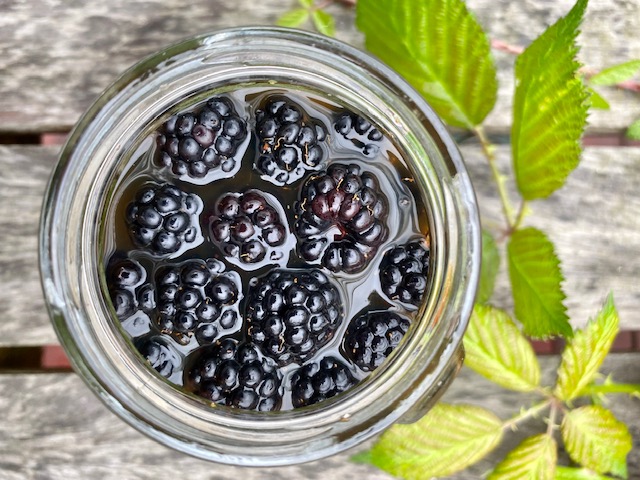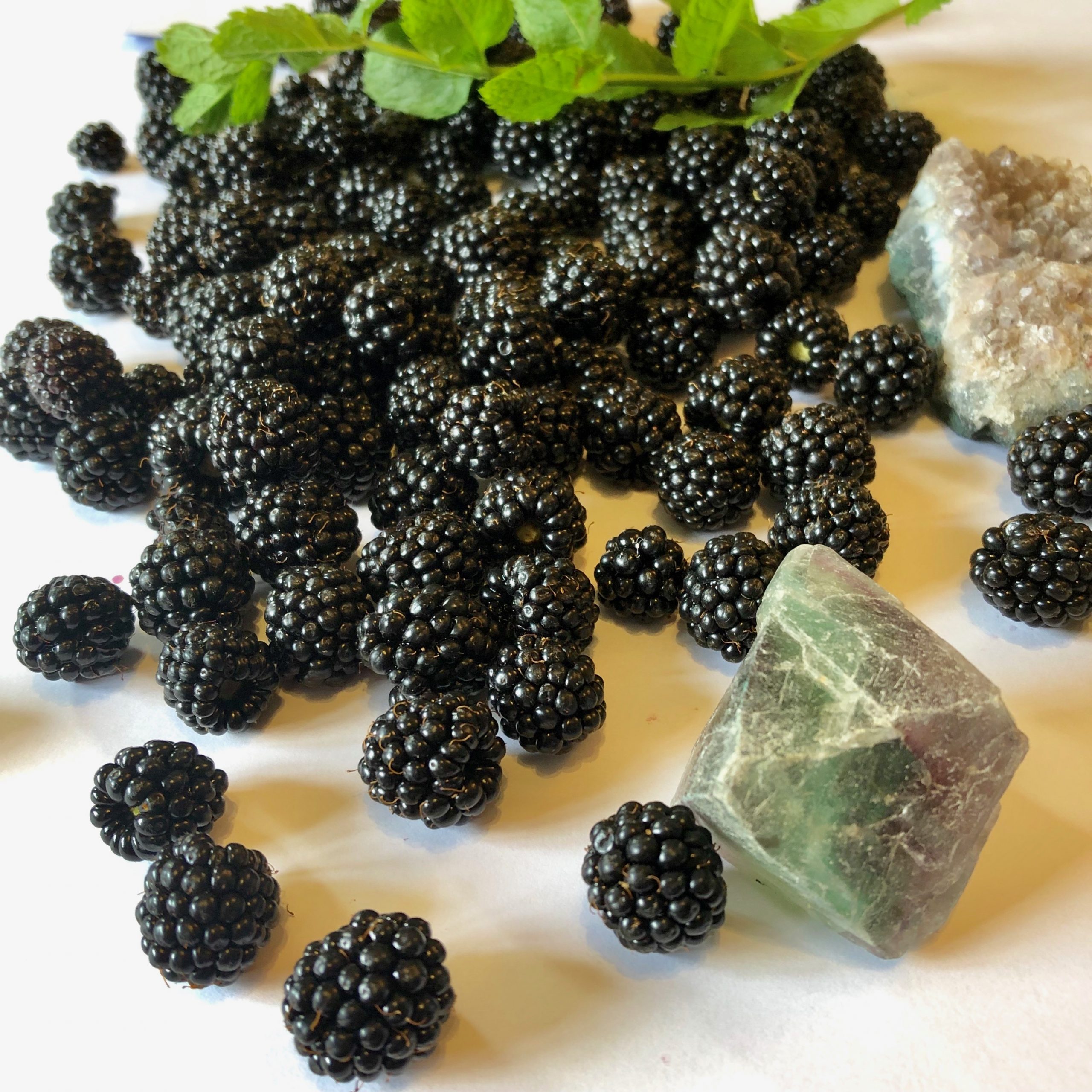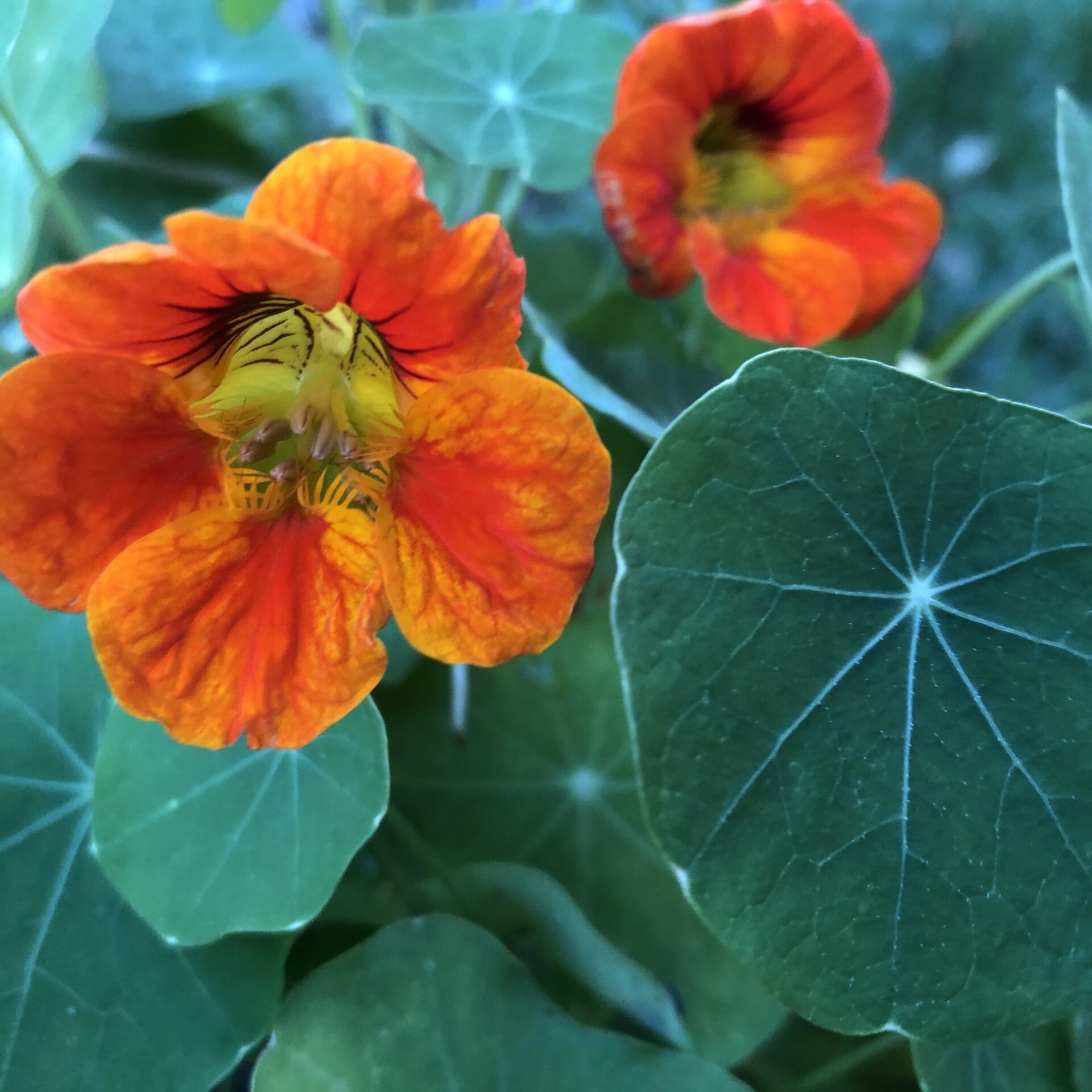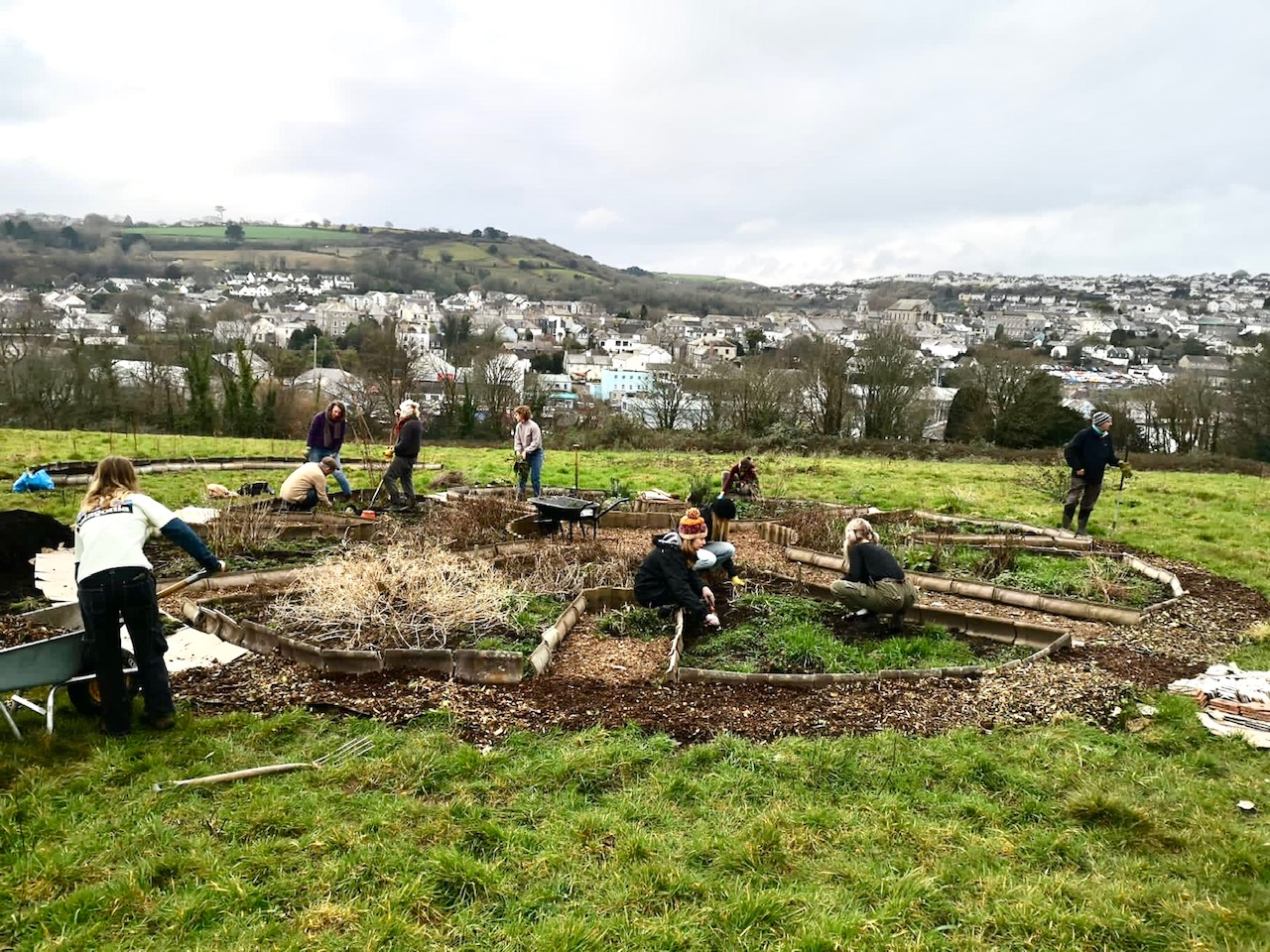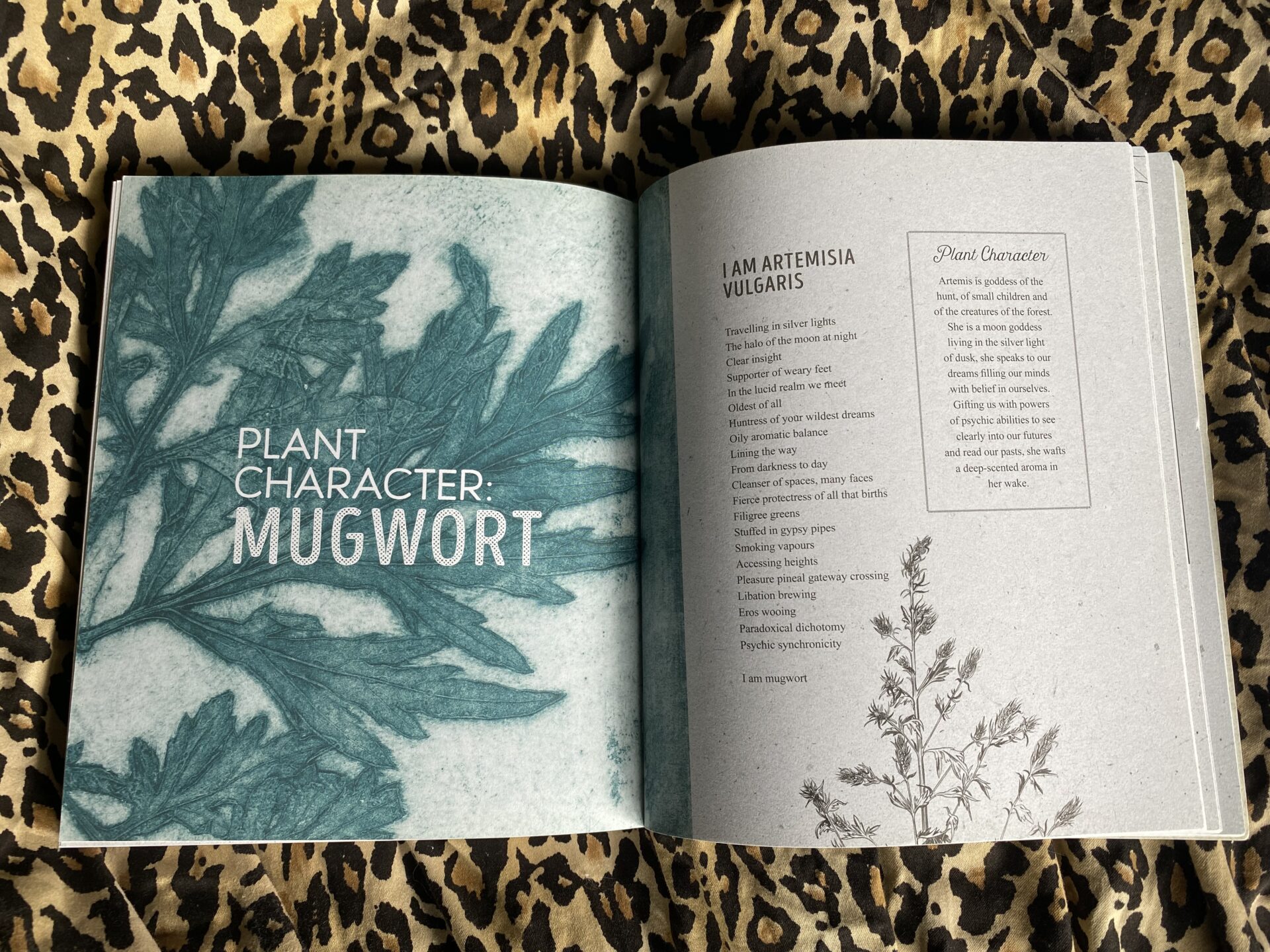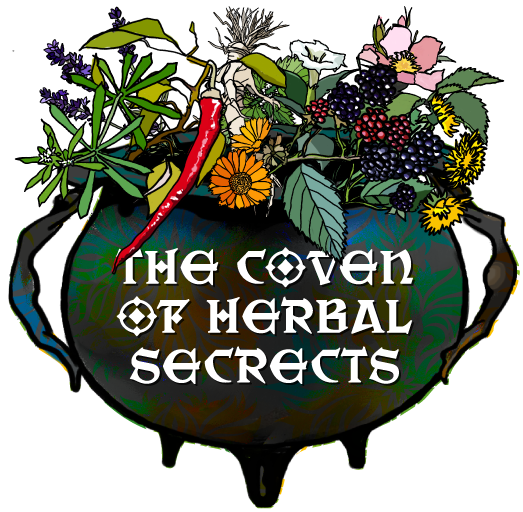Bramble – Blackberry
Rubus fruticosus, or the common blackberry/ bramble as this thorny brute of a bush is more commonly known as is a familiar foraging dream around the late summer and autumnal months. The juicy tasty black berries a favourite of crumbles and jams, syrups, wines and liquors, easily recognised and not really mistakable for any other plants….so a safe bet. Most of us have grown up eating these hedgerow treats, so there is a lovely connection to childhood that comes as we fill Tupperware with these treats.
Blackberry is a perennial shrub of the Rose family with sprawling, woody, reddish purple or green, thorny stems, ready to snag fingers, arms and clothing! These thugs of the garden grow extremely fast and can reach heights of 5 meters. With dark green hairy leaves, toothed along the margins and white to pale pink flowers, turning into one of our favourite and familiar fruits. British bramble produced their fruits through a form of reproduction called apomixis, basically without fertilisation as a result some species are extremely localised. There are over 1000 micro-species of Blackberry in the UK alone; from the tiny and delicate wild Dew Berry to the larger cultivated (often thornless) varieties like Loch Tay
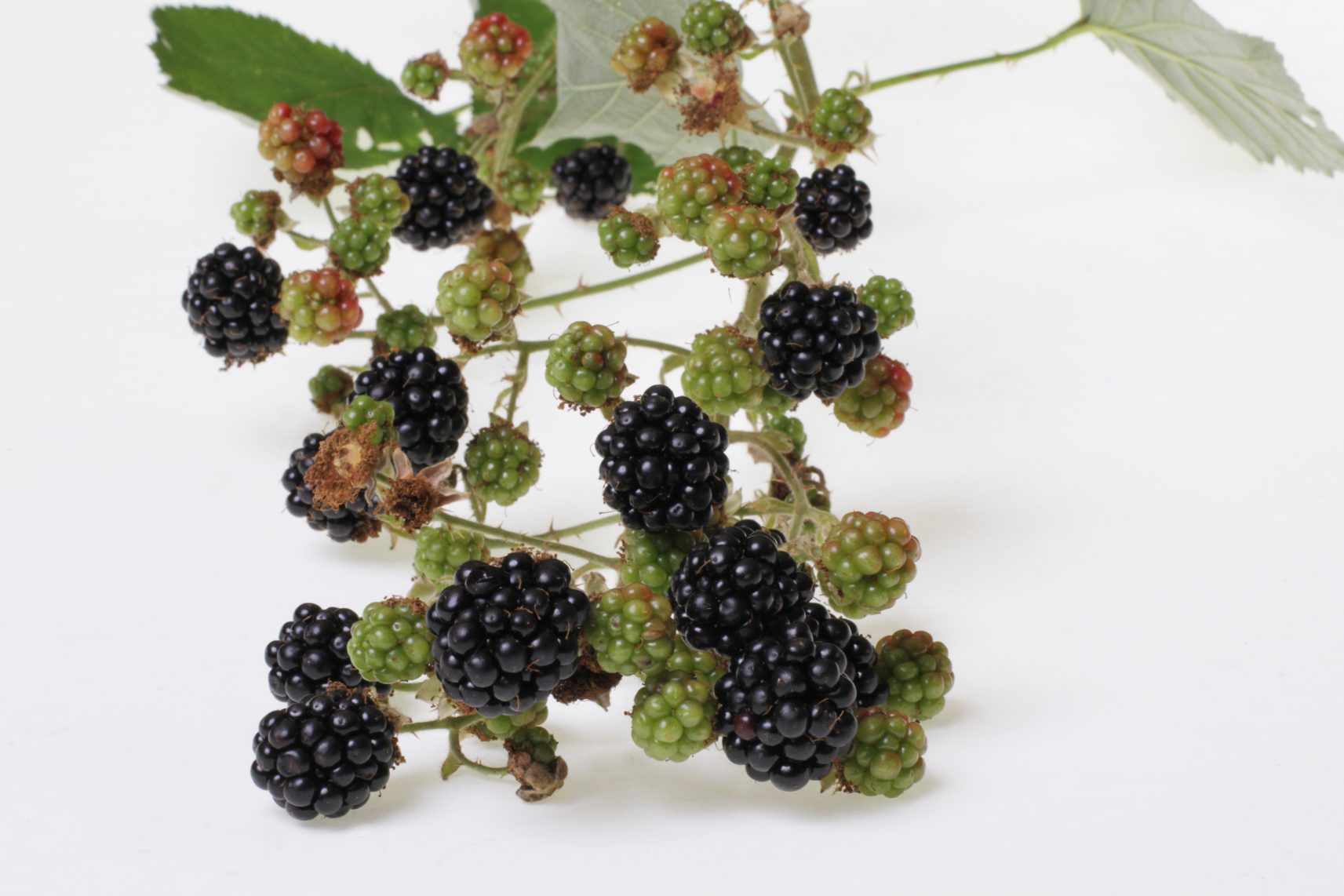
Medicine
This memorable plant has a long history and reputation for curing and preventing a wide variety of ailments. As with all members of the Rose family this plant is high in tannins, these tannins not only tighten tissue but also help to control minor bleeding. Tannins make the plant have a strong astringent nature, thus infusions of the leaves have been applied to many differing issues including to relieve diarrhoea, haemorrhoids or other digestive problems, as a mouthwash to strengthen spongy gums and ease mouth ulcers. The leaves are high in flavonoids and fruit acids as well as the tannins and extremely useful as poultices or compresses are used externally on wounds and bruises.
The berries are notable for their high nutritional contents of dietary fibre, vitamin C, vitamin K, and the essential mineral manganese and a powerful source of antioxidants. The root has also been applied in medicine as a decoction for dysentery and contains saponins and tannins. Blackberry leaf contains fruits acid, flavonoids, and tannins.
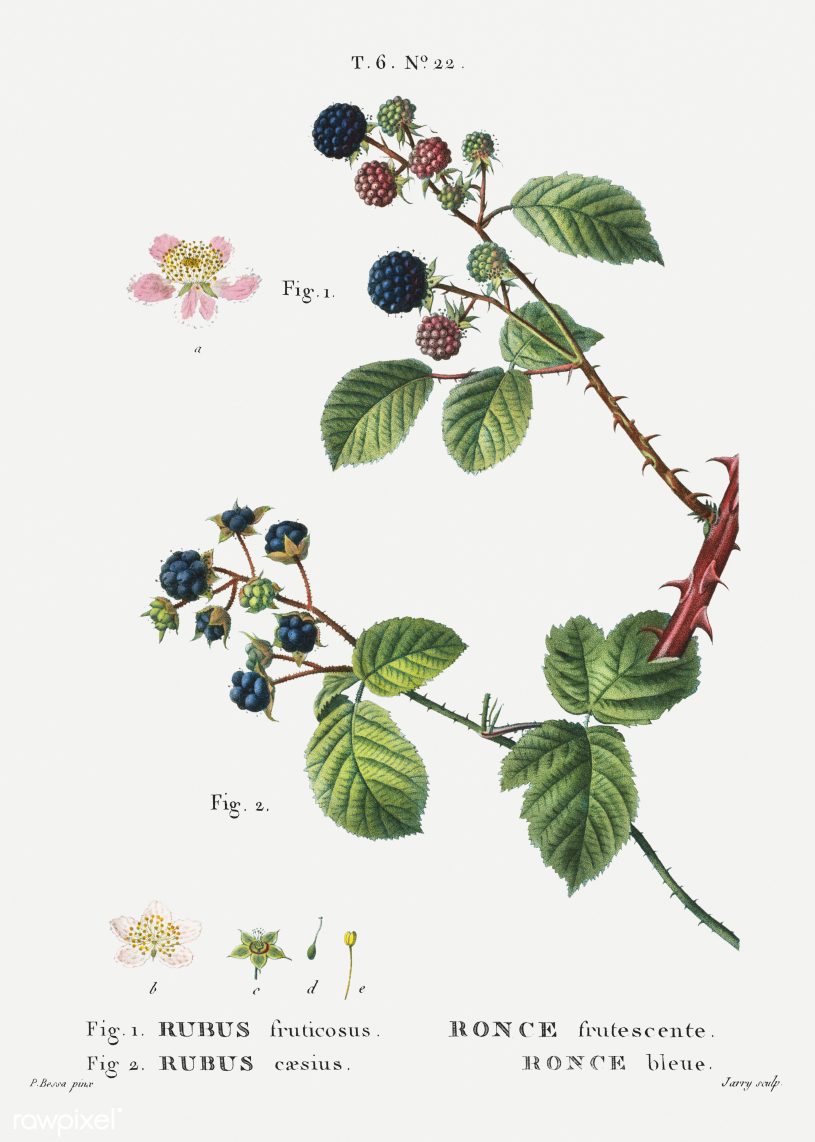
Folklore
There are multiple stories attributed to blackberries across varied religious, ethnic and mythological realms.
In an old proverb they signify haste. A man is so excited to pick the berries that he jumps into the bush and the thorns cause him to lose his eyesight. He regains it, however, upon jumping back out of the bush.
Greek mythology contains a legend similar to this. When Bellerophon, a mortal, tries to ride Pegasus to Olympus, he falls and becomes blind and injured upon landing in a thorny bush. This is his punishment for trying to take the power of the gods. Therefore, the fruit also symbolises arrogance.
There is an old Christian tale, warning not to eat the fruit after Michaelmas Day, the end of September time, the feast of the Archangel Saint Michael. This is the day on which he cast Devil out of heaven, and he landed in a bramble thicket, cursed the brambles and spat on them. As is so often the case, these folktales have their roots in common sense. By Michaelmas, the bramble berries become flyblown and start to rot. They can subsequently be infected by various moulds, rendering them inedible.
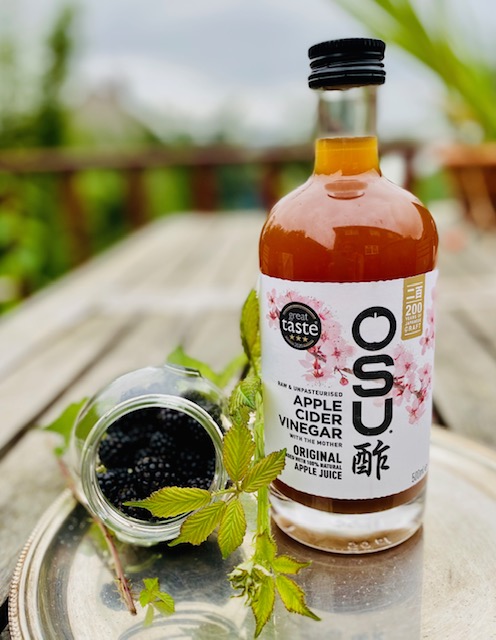
Blackberry vinegar
One of our preferred ways to preserve the blackberry is in vinegar. As well as making a totally delicious salad dressing this herb vinegar doubles up as a good remedy to ward away winter colds, simply taking a spoon full in a little warm water if you feel any sniffles coming on will give you a good dose of vitamins and nutrients to build your immunity.
It is incredibly simple to make as well – just fill a glass jar with blackberries and completely cover with apple cider vinegar (choose a good quality organic variety, or make your own!) Leave infusing in the vinegar for 7-10 days then completely strain out all the fruits and save the liquid.
We like our vinegar just like this but another thing you can do if you have made a lot of this is to sweeten your vinegar and turn it into a sort of balsamic.
Blackberry balsamic vinegar recipe
- Pop 300mls of blackberry vinegar into a saucepan
- Add 200g of organic brown sugar.
- Simmer on a medium heat stirring frequently until the mixture begins to bubble, cook for 2-4 minutes and then take off the heat to cool.
- Bottle and label
